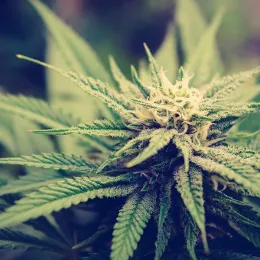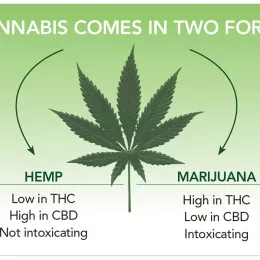A practical guide to marijuana

Justin Aikin - unsplash.com.
Recreational or medical marijuana is legal in most states in the U.S. If you live in one of those states and choose to use marijuana, here are some things to consider.
Don't trust labeling
“You can’t rely on labels,” says Daniele Piomelli, professor of anatomy and neurobiology at the University of California, Irvine. In states that test cannabis products, the results are troubling.
For example, in 2018 the California Bureau of Cannabis Control tested nearly 26,000 products—plant material, vape pen cartridges, waxes, oils, tinctures, topical creams, edibles—sold at dispensaries. Almost 15 percent failed tests for potency or purity, typically because they were mislabeled or had detectable levels of pesticides, microbes, or solvents.

A dose of THC varies
“THC drives the hallmark features of feeling high, like getting the munchies and feeling relaxed, as well as the negative side effects, like feeling paranoid or anxious,” explains Ryan Vandrey, associate professor of psychiatry and behavioral sciences at the Johns Hopkins School of Medicine.
(In recent years, marijuana’s potency has soared. In 1980, marijuana averaged about 1 percent THC. In a recent report, marijuana sold at dispensaries averaged 21 percent THC, according to labels.)
It’s up to each state to decide on an appropriate dose. In Washington and Colorado, for example, a dose of THC is 10 milligrams. In Oregon, it’s 5 mg.
Why the dose matters
“There’s a fairly narrow dose window between somebody being okay and someone having uncomfortable adverse effects with THC,” explains Vandrey.
In one study, he randomly assigned 17 infrequent marijuana users to smoke or vape marijuana with either 0, 10, or 25 mg of THC. Two people vomited and one hallucinated after taking 25 mg, but not 10 mg.
And when people inhaled 25 mg—but not 10 mg—of THC, they reported feeling more uncomfortable, sick, or anxious than when they inhaled the marijuana with no THC.
What’s more, people were more intoxicated after vaping than after smoking the marijuana.
The take-home message: If you try THC, start low. That means around 2 to 3 mg. “Work your way up slowly until you get the effect you want,” says Piomelli.
“And treat it with respect. This is not a toy. This is a drug. I’m concerned that people think, ‘Oh, it’s natural. It can’t harm me.’”
Think of edibles as the Wild West
“THC edibles are problematic,” says Piomelli. “It’s easy to eat a cookie without knowing what’s in it.”
And many edibles have much more than 5 to 10 mg of THC.
For example, Dixie Elixirs’ line of 8.5 oz. juices has 100 mg of THC per bottle, but the labels list a serving as 6 mg of THC. Only people who use the “dosing cap” will get the three-teaspoon serving of juice that contains 6 mg of THC.
And keep your edibles away from children. The Poison Control Center warns that some kids have gotten into their parents’ supplies.
Another potential problem with edibles
“When you inhale cannabis, you feel the effects almost immediately,” says Vandrey. But it can take 30 to 90 minutes to feel the effects of an edible. If you don’t know that, you may think the dose is too low. “So then you eat more and you’re stoned for hours and hours,” says Piomelli.
What’s more, the kind of food may affect how quickly the THC is absorbed.
“Let’s say you have a lollipop, a gummy bear, and a brownie, each with 10 mg of THC,” says Vandrey. “When you suck on the lollipop, you absorb some of the THC through the oral mucosa that lines your mouth. That absorption might be much faster than if you eat the gummy bear or the brownie. And if you eat the brownie, the absorption may be much slower if it has a lot of fat.”
“That begs the question: Why does it have to be in a lollipop, gummy bear, or brownie when it should be in a capsule?”
The answer is more about marketing than medicine.
Photo: Justin Aikin/unsplash.com
Tags




